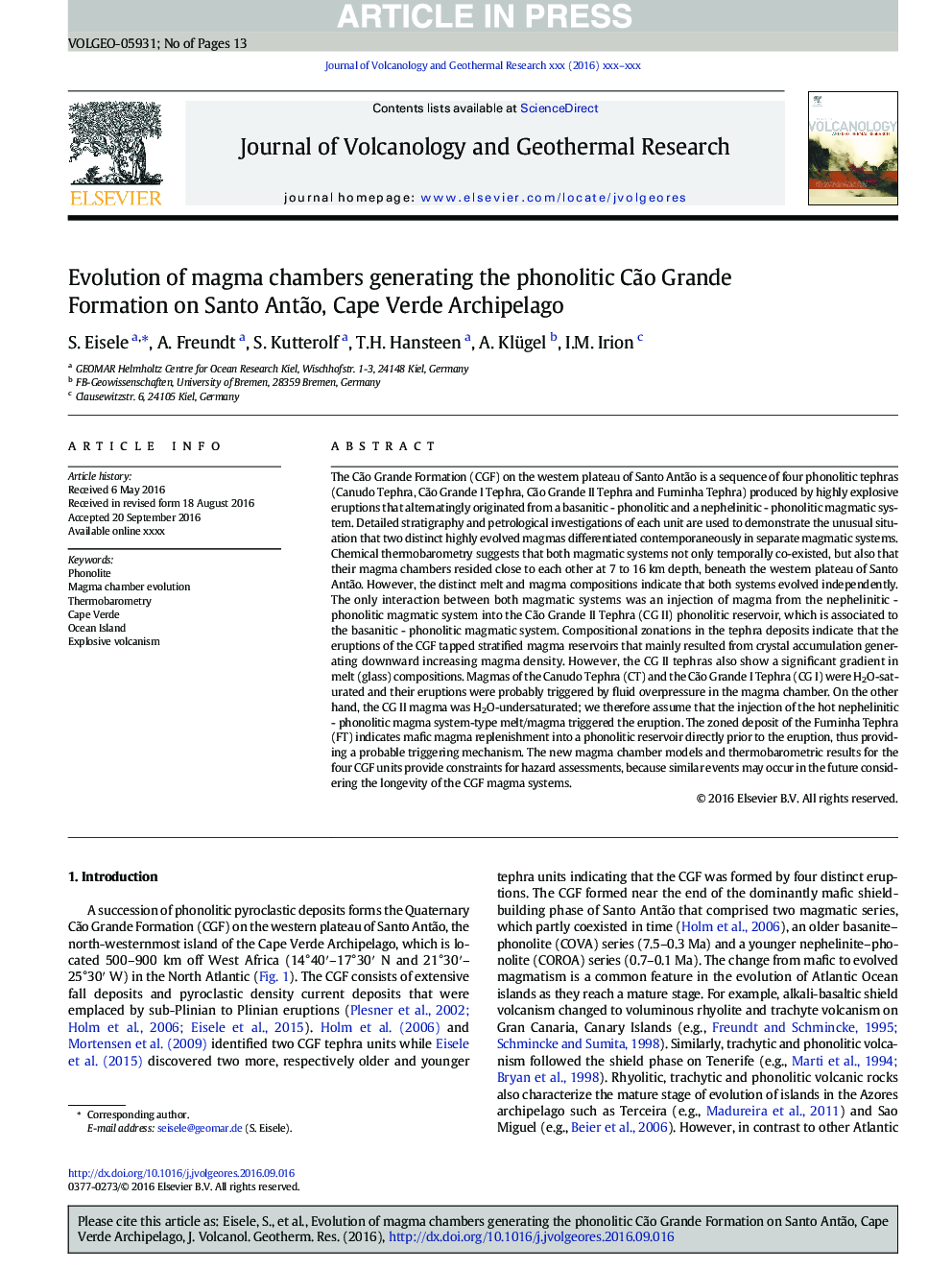| Article ID | Journal | Published Year | Pages | File Type |
|---|---|---|---|---|
| 5783787 | Journal of Volcanology and Geothermal Research | 2016 | 13 Pages |
Abstract
The Cão Grande Formation (CGF) on the western plateau of Santo Antão is a sequence of four phonolitic tephras (Canudo Tephra, Cão Grande I Tephra, Cão Grande II Tephra and Furninha Tephra) produced by highly explosive eruptions that alternatingly originated from a basanitic - phonolitic and a nephelinitic - phonolitic magmatic system. Detailed stratigraphy and petrological investigations of each unit are used to demonstrate the unusual situation that two distinct highly evolved magmas differentiated contemporaneously in separate magmatic systems. Chemical thermobarometry suggests that both magmatic systems not only temporally co-existed, but also that their magma chambers resided close to each other at 7 to 16 km depth, beneath the western plateau of Santo Antão. However, the distinct melt and magma compositions indicate that both systems evolved independently. The only interaction between both magmatic systems was an injection of magma from the nephelinitic - phonolitic magmatic system into the Cão Grande II Tephra (CG II) phonolitic reservoir, which is associated to the basanitic - phonolitic magmatic system. Compositional zonations in the tephra deposits indicate that the eruptions of the CGF tapped stratified magma reservoirs that mainly resulted from crystal accumulation generating downward increasing magma density. However, the CG II tephras also show a significant gradient in melt (glass) compositions. Magmas of the Canudo Tephra (CT) and the Cão Grande I Tephra (CG I) were H2O-saturated and their eruptions were probably triggered by fluid overpressure in the magma chamber. On the other hand, the CG II magma was H2O-undersaturated; we therefore assume that the injection of the hot nephelinitic - phonolitic magma system-type melt/magma triggered the eruption. The zoned deposit of the Furninha Tephra (FT) indicates mafic magma replenishment into a phonolitic reservoir directly prior to the eruption, thus providing a probable triggering mechanism. The new magma chamber models and thermobarometric results for the four CGF units provide constraints for hazard assessments, because similar events may occur in the future considering the longevity of the CGF magma systems.
Related Topics
Physical Sciences and Engineering
Earth and Planetary Sciences
Geochemistry and Petrology
Authors
S. Eisele, A. Freundt, S. Kutterolf, T.H. Hansteen, A. Klügel, I.M. Irion,
